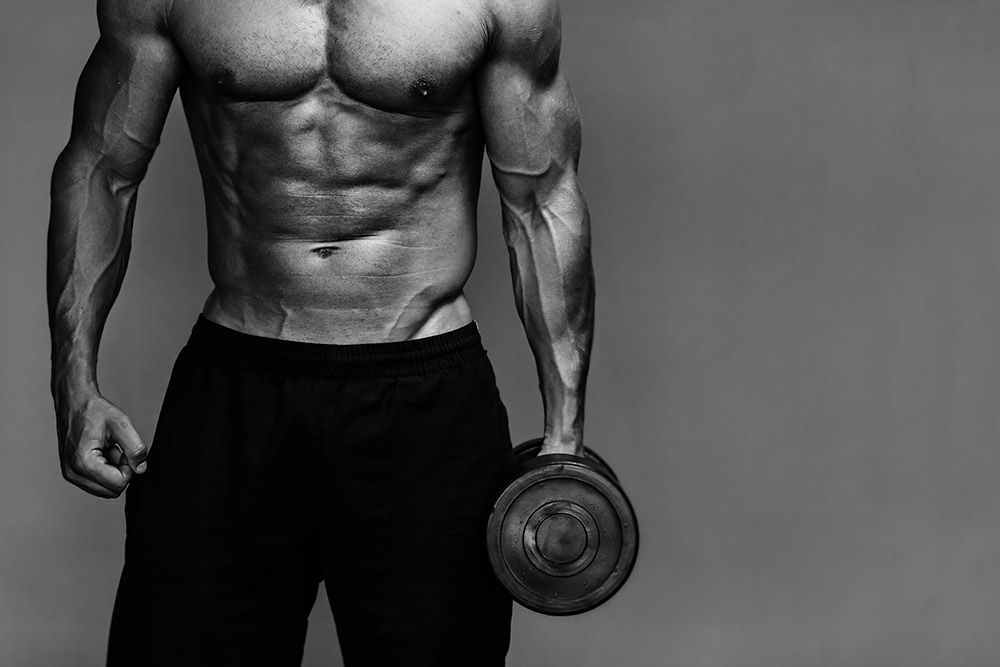
Hypertrophy Training Foundations
Building muscle is not an easy feat. Many presume you just go to the gym, lift some weights, eat more protein and the process looks after itself. The reality is that there are a lot more pieces to the puzzle than that.
I’ve seen a lot of people go to the gym and look the same year after year, despite consistently training 3-4 times a week. Just like strength training, there are also rules for Hypertrophy that must be stuck to if you want to grow. Here are your top 5 foundations for muscle development.
1. Intention
“If you can’t contract the muscle without a weight in hand, what use will adding load do?” This is something that many a bodybuilding coach have preached to me throughout my career. If you want a muscle to grow, you need to be able to contract it first. If you do not have the ability to contract a muscle, adding substantial loads to a movement is likely to develop the wrong muscle group and lead to structural imbalances.
Ever notice guys who have big traps, rounded shoulders but small chest’s in comparison to the rest of their body? Due to lack of patience and technique, they are lifting heavy weights by any means possible. The growth in their shoulders and traps is actually the bodies way of protecting itself because of a lack of stability in other areas. This lack of stability means the chest can’t properly function as it should.
To properly develop a muscle, you need to be able to contract it extremely hard without any weight. Once you can do this, find an exercise where you can replicate this contraction and start with light weights in a 10-12 rep range. Build this base and the muscle will grow.

2. Differentiate purposes
In theory, there are two types of mechanisms for hypertrophy. These are; Myofibrullar and Sarcoplasmic. Myofibrullar means the muscle becoming denser through the growth of new fibres whereas Sarcoplasmic is when the muscle swells due to a high volume of blood engorging the area. The two are very different mechanisms.
Myofibrullar is weight dependant. This means that to increase the development of new fibres, you need a novel mechanical stimulus to impact the muscle. I.e. more weight on the bar. Big compound movements, lower reps (4-8) and progressive overload are all great tools to use for this process.
Sarcoplasmic on the other hand is not dependant on weight. This method of hypertrophy is highly reliant on point 1 and requires you to be able to direct blood flow to a specific area. If you cannot contract a muscle, this process will be very difficult. Dumbbells and cables tend to be more efficient utensils for pump work.
Going as heavy as possible for 10 reps on bench press is neither one nor the other. There’s nothing wrong with doing high rep compound movements, but your technique must be impeccable before hand. You need to earn the right to do this. I would keep compound movements to lower reps and slower tempos and dumbbell/cable work to high reps with total intention being on feeling the muscle.
3. Personalise
Foundation principles are great for knowing where you stand with training. However foundation movements can be challenged. The degree at which a muscle responds to an exercise is purely unique to the individual. Some will get a big legs from squatting, some won’t. This isn’t something that needs to be debated, it’s just biomechanics. You can initially play around with your main exercise selection, just be sensible in what you choose.
Always look to work the full range of motion and go for as big of a compound movement as possible. So for example, substituting Leg Extensions in for Back Squats wouldn’t be wise as the stimulus is very different. However going for a Safety Bar Box Squat instead would be. It’s the same movement but altered slightly to accommodate for the individual.

4. Tempo is key
There’s a lot of onus on the rep ranges for hypertrophy. Theoretically speaking, 8-12 reps is ideally for muscle growth. This is true, but neglects a time under tension, an extremely important component to hypertrophy.
If you want to stimulate your muscle to grow, you need to keep the muscle under tension for anywhere between 40-70 seconds. If you utilise a tempo of 4 seconds down, 1 second up, this means that the minimum amount of reps required is 8. However, you can get the same effect by using a 6 second eccentric and dropping to 6 reps. The reduction in reps means you can use more weight, but the time under tension (TUT) remains above 40 seconds.
It’s common to see people just drop the weight down with little control. This reduces the time under tension regardless of what the rep range is. If you want your muscles to grow, learn how to move weights carefully and slowly. Tempo work not only builds muscle, it improves co-ordination as well. The more co-ordinated you are in a movement, the stronger you can make the movement.
5. Eat in a Surplus
You must eat to grow. This will never change. This doesn’t mean pizza, burgers and ice cream, it means lean protein, rice and oats. I’ve heard many a gym goer say “I eat a lot but can’t gain size”. This actually means is that they have a few big meals and presume they’re in a calorific surplus. What they need to do is figure out exactly how many calories they need to eat and then stick to this eating plan for a significant amount of time.
You couldn’t build an extension on your house without more bricks. More food is providing you with the energy you need to solidify your hard work in the gym. It doesn’t matter how hard you train, if you don’t eat and rest, you don’t grow. Simple as that.

